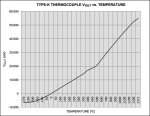Hi all,
I have built a heat treat oven. It has a PID controller connected to a k type thermocouple. The thing is I don't know if it is accurate. Can anyone recommend a method of testing. Obviously a thermometer would be the easiest way so I have been looking for a high temperature one. The ones I have found are k type but I need to put the probe inside the oven with the door closed and I am concerned that, whilst the probe can work at 850 C (up to 1200 C), perhaps the connecting cable cannot?
Anyone have any experience with this?
Cheers.
I have built a heat treat oven. It has a PID controller connected to a k type thermocouple. The thing is I don't know if it is accurate. Can anyone recommend a method of testing. Obviously a thermometer would be the easiest way so I have been looking for a high temperature one. The ones I have found are k type but I need to put the probe inside the oven with the door closed and I am concerned that, whilst the probe can work at 850 C (up to 1200 C), perhaps the connecting cable cannot?
Anyone have any experience with this?
Cheers.



